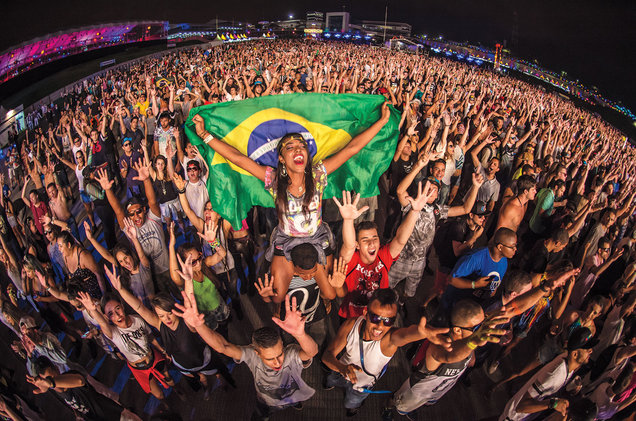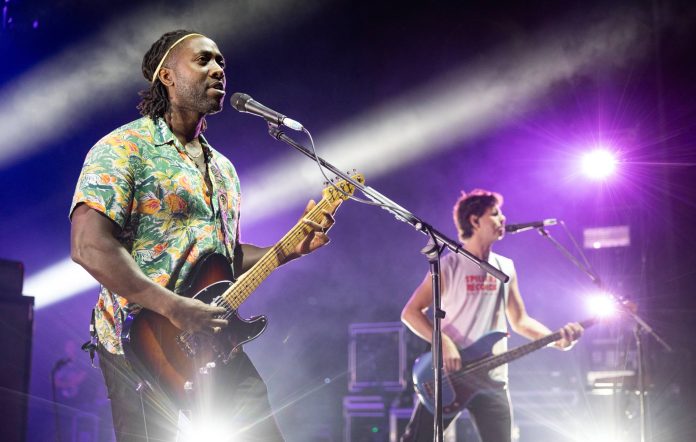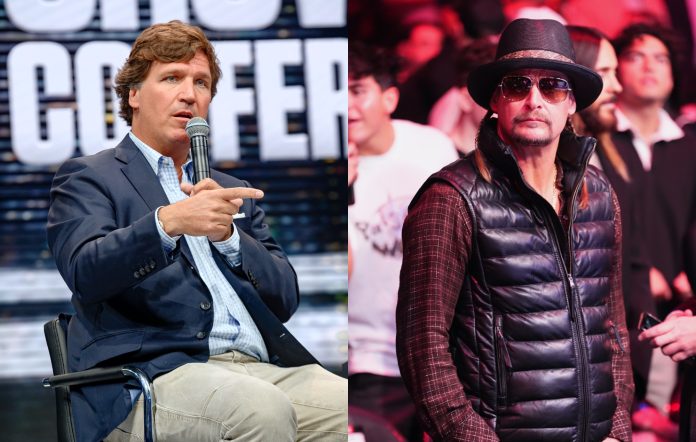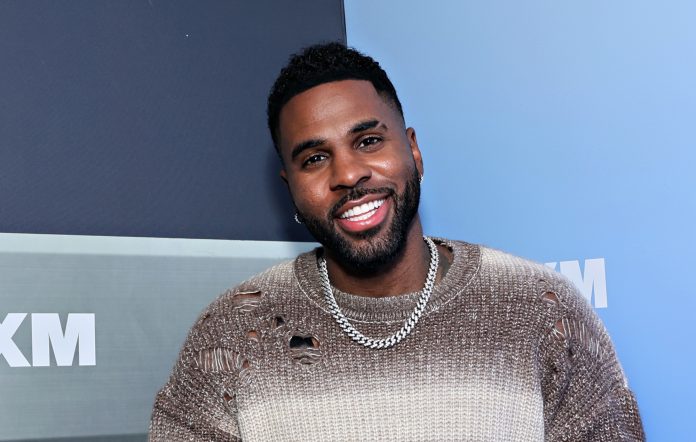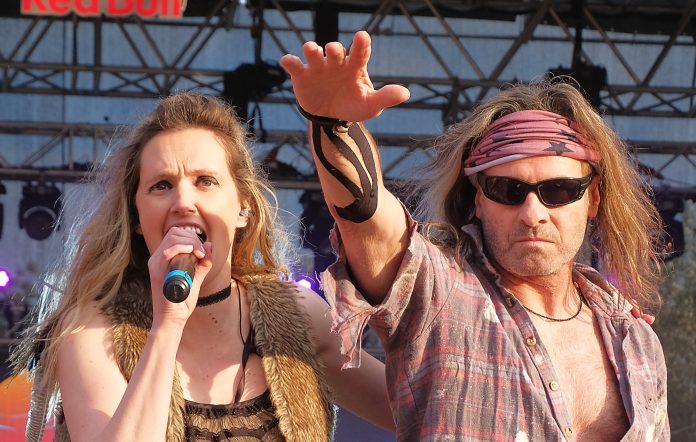The location they chose was Buenos Aires.
At the time, it was a big risk. Argentina was suffering its worst economic crisis on record and the electronic music scene had yet to fully emerge from the discos. But the bet paid off, in part because of the hard times. Attendance at Creamfields surged from 18,000 at the inaugural event to 80,000 people in 2010, encouraging Moonpark, South Fest, Time Warp and Ultra to enter the market. In 2012, Live Nation snapped up Creamfields' parent company amid a buying spree that also included acquiring HARD Events and forming a creative partnership with Insomniac, which puts on Electric Daisy Carnival.
"There was a big change in society during the economic crisis," says Mario Morocco, an Argentine production manager for the first six Creamfields. "They wanted something new, and they found it in electronic music. It became the rage."
Oakenfold, who helped bring Creamfields to South America, felt the shift. "Those early days were absolutely fantastic," he says. "I was playing Skol Beats and the carnival in Rio. The passion of the fans was amazing." It got so big, says Richie Hawtin, the British-Canadian DJ, that for several years there were events every weekend with high ticket prices in both Argentina and Brazil. "It was a stop on everybody's calendar -- multiple times a year," he says. The money was great, but it was the vibe, energy and warmth of the fans that also drew the international DJs, Hawtin added.
Now, South America's biggest music markets are once again suffering economic problems -- but this time, organizers are struggling to afford top talent and turn a profit. Currency volatility and a decline in disposable incomes have shrunk electronic music's festival schedule. International artists are instead opting to perform for higher fees in Asia, Europe and the United States.
While most music genres have been affected, EDM -- the American-branded version of electronic music that emerged the past decade -- is struggling the most, in large part because in recent years DJ-producers like Tiësto, David Guetta and Calvin Harris became pop stars commanding high-six-figure paychecks for some shows. EDM festivals have become massive and expensive spectacles, promoters, artists and managers say, and the global electronic music industry has grown from $4.5 billion in 2013 to $7.2 billion in 2019, according to the International Music Summit business report.
The currency fluctuations in Argentina and Brazil have made it "impossible" to plan an EDM festival in the two countries, says Matt Teper, vp business development at Insomniac. The Argentine peso tanked 23 percent against the dollar on August 12 alone, and it has lost more than 180 percent of its value since a financial crisis struck in April 2018. Brazil's currency has lost about half its value versus the dollar compared to five years ago. The swings could force promoters to pay a 25% premium to artists, whose fees are based in dollars or euros, says Teper.
"Bands have more opportunities right now to tour anywhere in the world than they have ever had before," says Huston Powell at Austin-based C3 Presents, which has been producing the Lollapalooza festivals in Argentina, Brazil and Chile for nearly a decade, including with EDM artists in the lineup. "If they can't get the money so that it makes sense for them to come to South America, they'll just choose not to come."
Just a decade ago, EDM was flying high in South America. Fueled by an unprecedented economic boom in Brazil and Argentina, promoters were able to afford top international talent that residents were hungry to experience at home, often for the first time.
The scene began heating up around 2005, when Fatboy Slim opened a set with Underworld's "Born Slippy" to 40,000 people on a beach in Mar del Plata, a five-hour drive from Buenos Aires. When the beat started to pound, the crowd, many in bikinis and board shorts, erupted into a sort of mass pogo. Two years later, Tiësto topped that with a free show on Ipanema Beach in Rio de Janeiro that drew over 200,000 people -- an event the Dutch DJ still referred to years later as one of the proudest moments of his three-decade career.
By 2015, Insomniac had mounted the first-ever Electric Daisy Carnival in São Paulo with top artists like Skrillex, Tiësto, Nervo and Martin Garrix for more than 80,000 people over two days, which grossed $2.8 million, according to Billboard Boxscore.
Insomniac has yet to bring EDC back to the region. Most of the other big EDM festivals, like Ultra and Tomorrowland, have put Argentina and Brazil on hold, and Creamfields is only playing Chile in the region this year, a more stable economy. The top EDM talent that do make it down are playing multigenre festivals like Lollapalooza — which grossed $14.7 million in Brazil this April, according to Billboard Boxscore — as well as built-in plays like Rio Music Carnival or smaller events, says Teper.
Top DJs are turning to other markets including Asia, where higher fees fueled by a burgeoning middle class have made it "a very lucrative region" for electronic artists to perform, says Ian Ruzal-Bron, senior director of business development at Insomniac.
While Argentina and Brazil are struggling, Mexico, by comparison, continues to pull in talent for festivals like Ultra and Wish Outdoor. It's helped by a more stable currency and inflation rate, and Mexico's live music market is surging overall. Insomniac has mounted an EDC in Mexico every year since 2014; it has become one of its biggest events outside of its flagship festival in Las Vegas.
A capacity restriction in Buenos Aires has complicated matters. Five drug-related deaths at the Time Warp Festival in 2016 sparked a clampdown that has made it difficult for festivals to run the economies-of-scale model that many organizers rely on to make a profit. "Festivals can't pay top talent prices, bring in world-class production and charge low ticket prices unless they are going for volume," says Teper.
Lately, those restrictions are showing signs of easing; Argentine DJ Hernán Cattáneo got authorization for a show in March at an open venue, playing for more than 12,000 people. But EDM has lost its momentum, with fans turning to other genres. Underground DJs like Hawtin, Marco Carola and Solomun still pull in crowds, says Ian Ruzal‑Bron, senior director of business development at Insomniac. "Tickets to underground shows are less expensive, and the production less rigorous, than an EDM show," he says.
Oakenfold still makes it down. "I go every year, but the days of high pay are gone," he says. "It's now more for the love of the scene rather than getting big pay days." Hawtin, who feels there is a "bounce back" underway, said he will be playing in Buenos Aires in November, as well as in Florianópolis and São Paulo.
The absence of big-name international artists has led local artists to fill the void. In Brazil, DJs Alok and Vintage Culture have become "monster acts," Powell says, and festivals are booking almost entirely homegrown talent. Vintage Culture is doing his Só Track Boa festival in over 10 markets across the country. In Argentina, the dance scene has gone mostly underground, dominated by weekly and monthly parties in cities like Rosario and Santa Fe that are still attracting thousands of people, Ruzal-Bron says.
Hawtin says he's noticed a rise in young promoters in Brazil, who with a do-it-yourself attitude are bringing in lesser-known international artists to play in second-tier clubs or underground warehouse parties, with the aim of building up to afford the top artists.
The big festival companies aren't giving up. Insomniac is having conversations with "multiple people" about bringing more events to Argentina and Brazil in the future, says Ruzal‑Bron. When fees recover, which promoters say will depend on how quickly the economies rebound, he believes it won't be hard to attract the top talent again. "The fan bases in these countries are so energetic and passionate," he says. "Artists who aren't connecting in these markets are missing out on lifelong fans."

